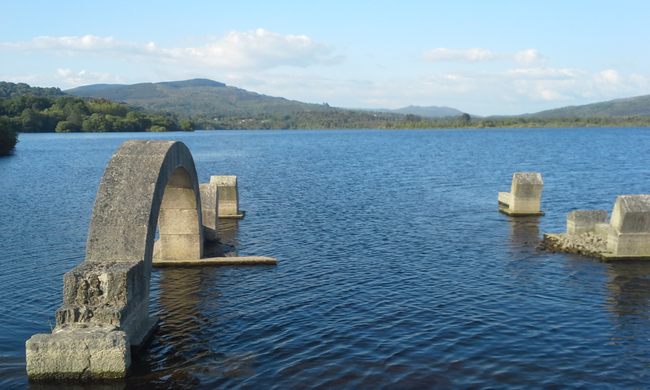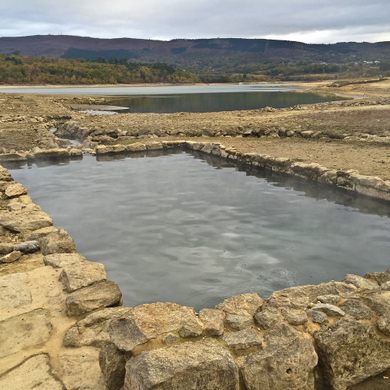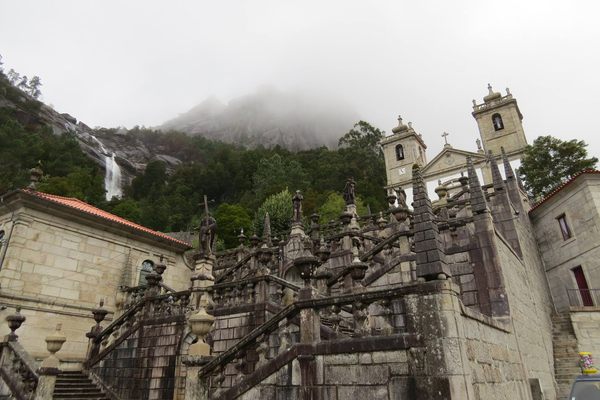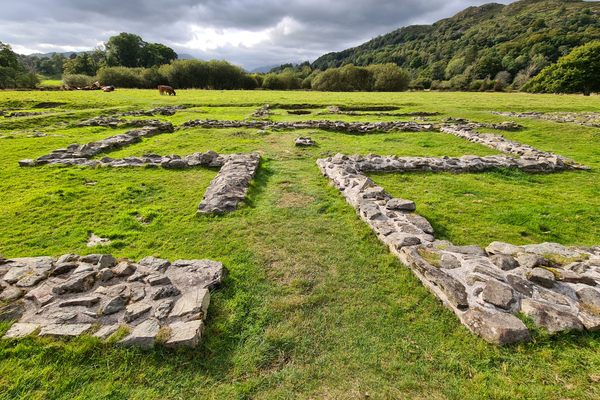Aquis Querquennis
In Spain, the ruins of a Roman military camp sit along a flooded section of a river.
The short pillars, ruined walls, arches, and moat that form the foundations of this former Roman military camp can sometimes be found half submerged in the reservoir, depending on the amount of rain upriver and the status of the dam. The sprawling and venerable fortification near the Lima River, known locally as “the city,” featured two granaries, a basilica and temple, an infirmary, and barracks large enough to house two centuria battalions and their commanders. It’s thought that a total of up to 600 soldiers could have been stationed here at any given time.
The construction of the barracks dates back to the reign of Vespasian, around the year 75, when it was likely used as a base from which to defend newly built roads connecting other, larger roads in this remote province. The modern road through this area is small even today—following it south brings you through a mountain pass and over the border with Portugal.
Nearby, families in campers picnic and lounge in the steamy waters of the hot springs, with several basins constructed from stone at the fountainhead. The thermal waters, which occur naturally in this part of inland Galicia alongside a number of different rivers, were revered by the Romans. The nearby colonial settlement of Ourense (now the provincial capital) was founded on the site of a thermal fountainhead to take advantage of the warm waters.
The benefit of having hot springs nearby is evident in the Roman preoccupation with hygiene and bathing. In addition, just as many do today, these early inhabitants believed that these mineral-rich waters had curative properties. But hot springs were not merely attractive for practical reasons, if not also for spiritual ones. A certain religious fervor surrounding the medicinal potential of hot springs was widespread among the Romans, who venerated the various gods and nymphs said to inhabit these sacred places, to whom they attributed that otherworldly warmth. Offerings were made directly into the waters—excavations in and around various Galician hot springs have revealed caches of gold coins, known to have been thrown into the sources of the springs as offerings to the gods.
Excavations at the old fort began in the 1920s but were halted at the outbreak of the Spanish Civil War, only to continue again in the 1970s. The reservoir pooling around the edges of this site exists as the result of controlled flooding caused by the construction of a hydroelectric dam built just downriver in the 1940s.
Know Before You Go
Make sure the area isn't inundated by flood waters if you are hoping to bathe in the hot springs. You might be able to call and ask the local municipality.















Follow us on Twitter to get the latest on the world's hidden wonders.
Like us on Facebook to get the latest on the world's hidden wonders.
Follow us on Twitter Like us on Facebook